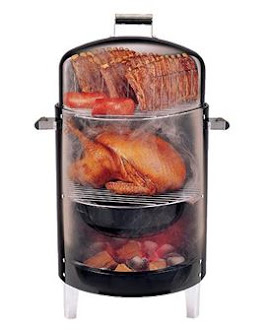SMOKE FLAVOURS
Smoking of food products has been used for centuries in many countries. Originally the purpose was to preserve the food, partly by drying and partly by adding antimicrobial constituents like phenols from the smoke to food.
As some of the constituents in smoke and in the smoke condensates may give rise to the health problems, limits should be set for the quantities of these components in the flavouring or in the final food.
INTRODUCTION
Smoked food is the food produced
either by the use of traditional smoking process or by the use of smoke
flavoring's or by the combination of both methods.
In principle four different ways can
be used to produce smoke food under two methods.
I) TRADITIONAL METHOD
1) Smoking
with freshly generated smoke from wood.
II) NEWLY EMERGED
METHOD
1)
Smoking with smoke regenerated from smoke condensates.
2)
Flavouring with smoke flavor preparations derived from smoke condensates.
3) Flavouring
with smoke flavor prepared by mixing chemically defined substances.
SMOKING TECHNOLOGY
In smoking process, the first step is to make a fire using dried wood. The kind of wood may depends on tradition and normally it will differ from country to country. For instance in the United Kingdom the use of oak is common, whereas in Denmark beech is normally used, Besides the use of wood, some lands of aromatic herbs and spices and twigs of juniper can be used in order to give a special taste to the smoked products.
After having made the fire, the flames are reduced to a glow. The wood is then decomposed by the high temperature in the ignition zone. The composition of the smoke depends very much on the temperature in this area.
The use of smoke flavorings often comprises atomizing of smoke flavouring and then spraying it on the surface of the food. The result in taste, appearance and preservation is more or less the same as that obtained by using the traditional smoking process.
IMPORTANCE OF SMOKE
METHODS IN SMOKING
Traditionally, smoking only allows limited possibilities for control of temperature, humidity, content of smoke, circulation and so on. The development of equipment for smoking of food has concentrated on the possibility of possibility of all these factors.
The methods are actually categorized by temperature used :
COLD SMOKING: Where the temperature is normally 18-50 degree Celsius. The process is typically used for salmon, salamis, kippers, ham and special cheese. A cold smoking may last several weeks. Normally the smoking process lasts for 6-24 hrs.
WARM SMOKING: The temperature used here is about 40 degree Celsius used for baron and some types of sausages. Warm smoking is a combination of drying, coking and smoking process.
HOT SMOKING: It is a combination of strong heating and smoke, which gives a temperature in the products of 70-90 degree Celsius.
FACTORS INVOLVED
During smoking process many different factors are of importance, and some of them also influence the absorption of smoke by food.
Some important factors are
· Density of smoke
· Humidity
· Temperature
APPLICATION
1) Can blended directly into the food.
2) Can prevent drying loss which normally takes place during smoking process .
3) Food products does not loss weight.
4) Processing time gets reduced.
5) Price of the products gets reduced because of less processing steps.
6) Color of the products does not affect
7) By the same time preservation process also occurs.
TECHNOLOGY DEVELOPMENT
1) To get a better controlled process thereby a better controlled development of flavor and appearance.
2) To reduce the amount of possible carcinogen or other toxic components in the smoke.
3) To reduce the contamination of the environment by smoking process.
4) To increase turnover in production.
5) To develop electrostatic filters in order to remove unwanted impurities.
6) To develop water filters for washing of smoke.
CONCLUSION






